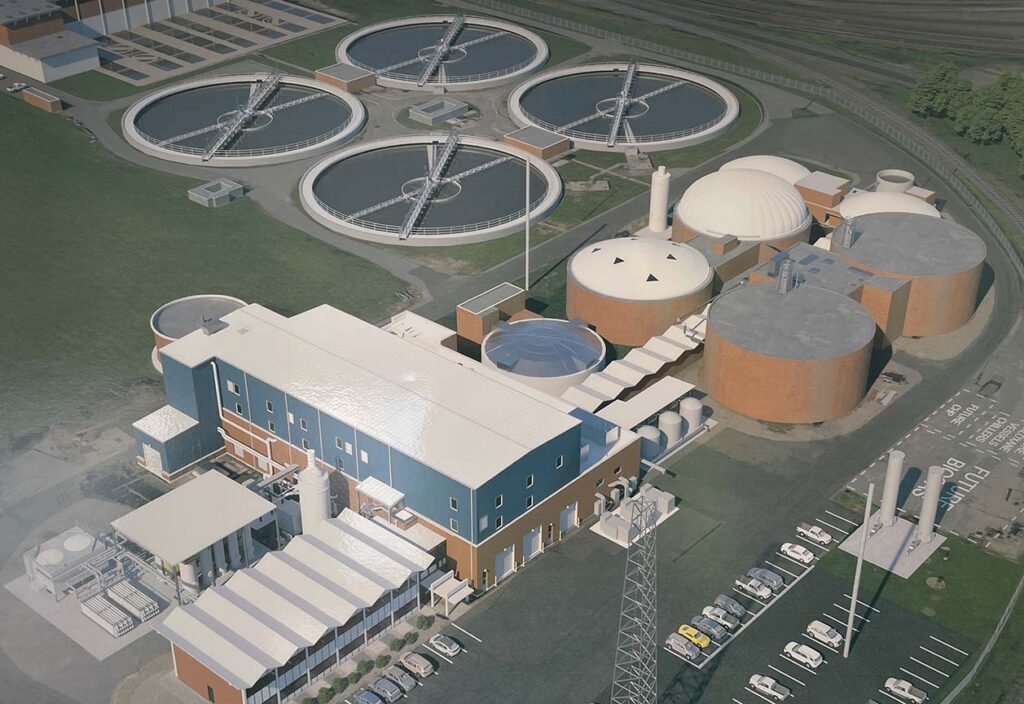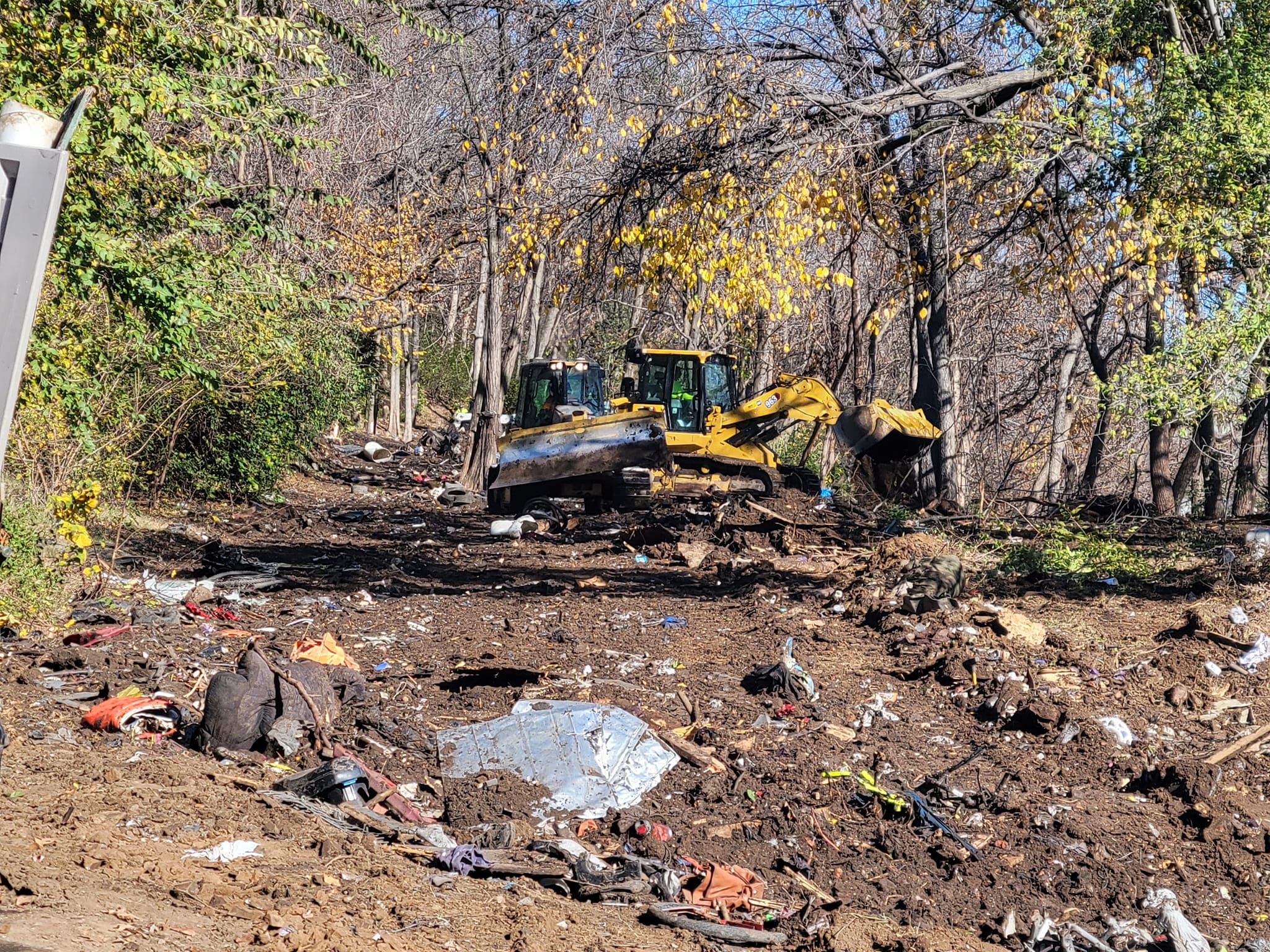
Abby Hoover
Managing Editor
The Blue River Wastewater Treatment Plant, located near I-435 and Front Street, is transforming into one of the most critical water infrastructure projects in the Kansas City area, the Blue River Biosolids Facility.
“This is the biggest wastewater plant in the City of Kansas City,” said Brent Herring, Wastewater Operations Officer at KC Water. “We have 66 facilities, and all solids in the wastewater system come here to be treated.”
On an average day, the facility treats close to 75 million gallons of wastewater.When completed, the facility will be the first plant of its kind in the Midwest to recycle human and domestic waste into useful energy sources.
“I always want to give a shout out to the team of folks that work here in this division,” Herring said. “You know, we’re a 24/7 operation. Holidays, weekends aren’t really on anybody’s calendar. Everybody is drinking and flushing every day and our team of people is dedicated to be here to take care of that, meet water quality and provide sustainable solutions in terms of maintaining the infrastructure cost effectively.”
The current Blue River Wastewater Treatment Plant opened as a primary treatment facility in the early 1960’s and underwent an upgrade in 1987. Since that time, new processes and technologies have been added to provide advanced wastewater treatment.
The plant currently utilizes aging and increasingly unreliable infrastructure to dispose of solid waste called sludge, collected from wastewater. The existing system receives sludge from three other wastewater treatment plants in Kansas City, that is then processed and burned in incinerators before it is disposed of in landfills.
Since upgrades are necessary at this time, KC Water has carefully studied the current system and available replacement options, and determined that the best economic and earth-friendly investment for Kansas City is to use a Thermal Hydrolysis Process (THP).

x ABBY HOOVER
KC Water will do away with the aging incinerators that would cost approximately $60 million to replace, and instead install a two-step pressure cooker process that prepares sludge for efficient anaerobic digestion.
The anaerobic digestion step recycles the sludge and allows it to be processed into useful biosolids and biogas. These natural products can be used to produce electrical power, heat, or feed into natural gas pipelines.
“It’s about replacing 50-year-old technology with technology that enables us to more cost effectively treat solids and remove them from the water and turn them into a reusable product without restrictions, a Class A product that can be used for agricultural purposes, soil amendment…” Herring said.
“This is a green solution, it’s a sustainable solution, and it’s a technology that will be with us for a very long time.”
The THP process will also increase sustainability. This process protects the environment, public health and helps increase the community’s quality of life. The THP system will optimize the use of existing infrastructure, such as digester tanks, while modifying the wastewater treatment plant to be more cost effective to meet the future biosolids treatment needs of the City.
“This project, the thermal hydrolysis process that’s being implemented here, really innovative solids processing, is one of only nine similar projects in the country and truly is at the forefront of the kind of innovation and thinking that wastewater utilities ought to take on in order to address climate issues, protect the environment, and enhance the quality of life for their residents,” said U.S. Water Alliance Chief Executive Officer Mami Hara.
She said the project will create a very large energy benefit to this kind of project. It reduces greenhouse gas emissions by turning what is usually considered to be waste into a valuable resource and reducing the energy costs of the utility, as well.
The facility is being paid for with state and federal money; $100 million from the State Revolving Fund program and up to $40 million from local investment.
“At a time when people use a whole bunch of buzzwords to talk about how we can be more renewable, how we can think about climate change, you are actually doing it, and you’re showing the best example around the country and indeed for the entire city in connection with what we’re trying to do,” Kansas City Mayor Quinton Lucas said. “This can be just the beginning, not just for water services, but aviation, so many other areas of Kansas City. With the infrastructure bill federally, we’re looking to have billions of dollars of investment in Kansas City, but with federal resources, state and local – and certainly with our private sector partners – let’s look to how we can be creative in each of those areas.”
The four-year project is about halfway finished. Customers will not see any decline in services during the project, Herring said.
“It’s a great investment on the part of the federal government, the state and the localities,” Hara said. “I just want to congratulate everyone involved in this project, the EPA for the funds that have been provided, the policymakers here from the state who have come to support infrastructure investment, who really are helping communities across Missouri to do this kind of work, and the utility here, and the mayor to carry this project through.”
More information about the project can be found on the Blue River Biosolids Facility website, blueriverbiosolids.com.

















